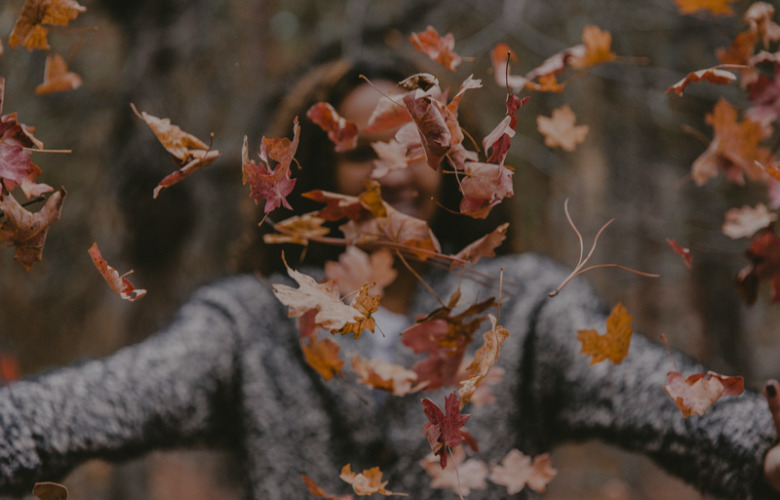
A little while ago, we published an interview with performer, choreographer, and artistic director Claire Bournet. In this follow-up chat, Claire tells us about a subject close to her heart: the fusion of disciplines and the art of overcoming stereotypes and boundaries.
Throughout our conversation, Claire and I were both fascinated by the thought of people who start working in one discipline, then move on to something different. How can they widen their horizons yet manage to keep the essence of their original passion?
Claire has found the magic recipe for herself. As an ice skater, originally, she now works in a fusion of disciplines and choreographs performances. These still include the soul of ice skating, yet Claire elaborates on it rather than allowing it to limit her vision and means of expression.
It is very interesting to see someone who is in a discipline with a strong stereotype – like gymnastics, synchro swimming, ice skating, mime, for example – and to see them learn new skills whilst keeping the essence, the technique of their original discipline.
They bring their discipline somewhere else. They help their art form to evolve into something more contemporary.
This is a quest not only for the art world. But for life in general. We are all so quick to label, to stereotype, to limit ourselves and others.
The other day, I talked with a professional colleague with whom I often work with. She is from Romania and used to work in finance.
When she moved to France, she wanted to set foot in the cultural world. However, at first no one even considered her for any of these roles. Only when she began hiding her nationality as well as her financial background did people actually begin looking at her CV. It was then, she received her first invitations for job interviews.
I remember facing that same problem time after time. Often, when updating my CV before applying for my next job, I would think, “Should I hide that I used to be a professional ice skater, or not?”
It depends on the country as well. In France, I feel, ice skating has a strong connotation. People have a very limited view of what an ice skater is, or what he or she can do.
When I was in the UK, it was different. There, it would have been crazy not to mention that I am an ice skater. Because in the UK, ice skaters have a very good reputation. People look at them favorably. If I was in an office for example, and needed something, it was always good to mention that I used to be a skater.
So, depending on where we are, where we want to go, and what we want to do, our past experience and skills can be either an asset or a hindrance.
When I am looking to employ someone for a new association or partnership, I have a very different view that is not so much embedded in people’s past.
For me it is interesting to see who and what people are NOW. I am not even that interested in their CV but rather in what they have done yesterday or the day before. It is far more interesting.
But yes, we have baggage we bring along with us. It can’t be denied.
There is a multitude of bridges which can be created between artistic disciplines. And, there are many artists out there who have built such bridges and links. Who have experienced other fields and developed their art.
They brought each new experience into their work. Which ultimately enriched it and stretched boundaries.
Currently, I work with an artist, Helene Rozenberg, who is a photographer. But she also does drawings and illustrations.
We work together to create a set of playing cards. The cards will be about dance. Each card will show one of our creative processes or dancing tools.
We are greatly enjoying working on this project together. We are using the school because we have the possibility to organize laboratories and to research with two classes we see every month for one week.
So, from Monday to Friday, my partner Sébastien and I will work with the kids and do dance workshops with them. Then on Friday, the illustrator will come in and watch what we do, take notes, sometimes pictures.
On Friday afternoon she’ll be with the kids to do a drawing and illustration workshop. Their drawings are based on what they have gone through in their dance classes with Sébastien and me.
The children basically try to express what they have been dancing through drawings.
Last week, we worked on lightness. The image we gave them was a falling leaf. Like the leaves in autumn. When they are falling and the wind catches them. Sometimes they fall very slowly. Other times, the wind will push them fast and they will turn and gain speed as they go.
This is an image my partner Sébastien also uses to help dancers visualize and go quickly into a sensation of lightness.
In our set of cards, we will have a card called “The Little Leaf.” On one side of the card, there will be a drawing. On the other side, there will be the instruction on how to go deeper and deeper into that sensation, to express it through dance.
I am so excited about this project. Lately, more than ever, I feel very attracted by colors and graphic design. I am very much into images.
And, I like this bridge we build between dancing and drawing. Because, somehow, drawing is also movement. Just on a smaller scale.
It builds an additional bridge for the kids as well. When we do a workshop with them, they go through many things, many emotions. For them, it is difficult to name what they feel. So, we make sure that, after each session, we help them name what they were feeling and going through.
But, sometimes, it is difficult to name a sensation. Often, it is far easier to put a color on it, draw lines, and help things to become concrete for the kids through visual rather than verbal means.
It is a fact that dancing is very ephemeral. But drawing stays. It leaves a trace the children can follow.
In some ways, it is a logical extension to go from building bridges between physical art forms to building bridges between the physical and the visual arts. Who knows where else this will lead. There are no limits.
Keep Your Cool Backstage as a Stage Manager: 12 Insights
The Importance of Kindness in Entertainment


Liam Klenk was born in Central Europe and has since lived on four continents. Liam has always been engaged in creative pursuits, ranging from photography and graphic design, to writing short stories and poetry, to working in theatre and shows. In 2016, Liam published his first book and memoir, 'Paralian'.
Read Full Profile© 2021 TheatreArtLife. All rights reserved.

Thank you so much for reading, but you have now reached your free article limit for this month.
Our contributors are currently writing more articles for you to enjoy.
To keep reading, all you have to do is become a subscriber and then you can read unlimited articles anytime.
Your investment will help us continue to ignite connections across the globe in live entertainment and build this community for industry professionals.